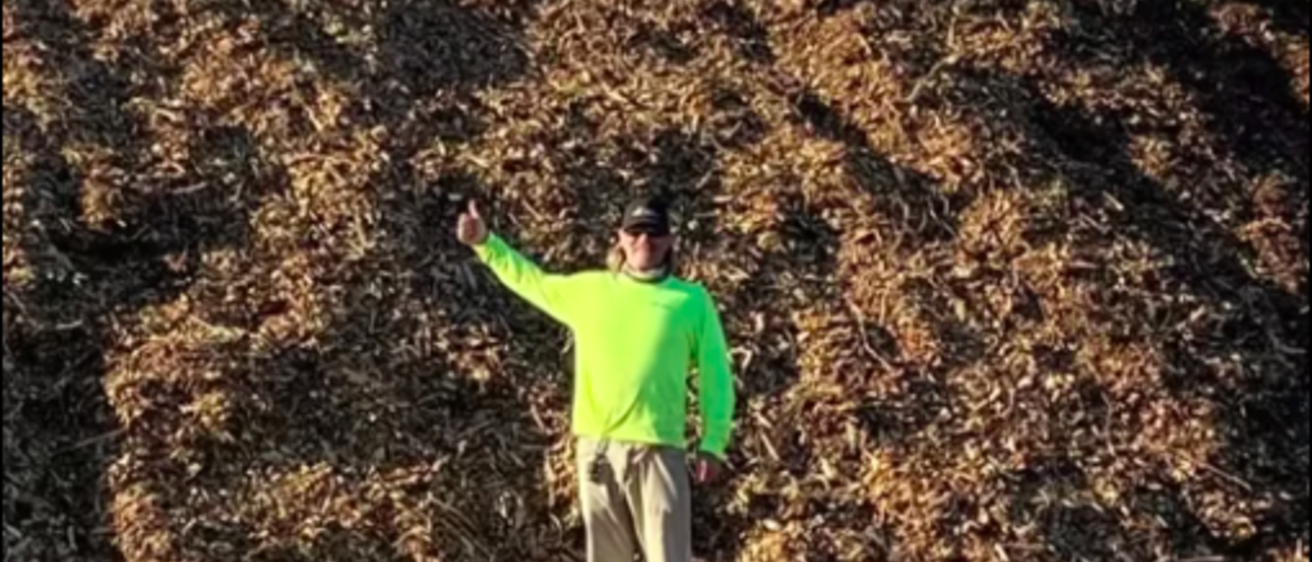When trees were removed from campus as a result of the Emerald Ash Borer and the derecho wind storm, Landscape Services faced a decision: dispose of the excess material at a cost, or find a way for the material to benefit the university. Thanks to the Landscape Services team, a plan was made to re-grind the material in the wood pile and use a coloration process to match the mulch used throughout campus. Using the felled trees to create mulch resulted in cost savings of approximately $18,000 for our Landscape Services team and the university. It will provide two-years-worth of mulch for the campus.
After the discovery of the Emerald Ash Borers at the university in 2016, campus arborist Andy Dahl and associate director Scott Gritsch developed a plan to remove Ash trees on campus. Landscape Services began with removing the most affected trees and the ones that posed the greatest danger to the public. At the time, the campus had approximately 600 Ash trees and, to date, 535 have been removed and replaced with a vast array of species. The goal is to increase diversity within our tree canopy, and avoid large scale loss of a certain species due to a newly introduced disease.
Options were discussed to either dispose of excess material at a cost to the university or research ways to use the remains in a way that would positively impact campus. During this conversation, Grant Raitt, Landscape Services tree trimmer and former employee for the DuPage County Forest Preserve in Illinois with over 20 years of experience in the industry, proposed calling in a company that would re-grind the pile and use a coloration process to match the mulch we use in mulch beds throughout campus. This process sounded like the most sustainable and economical approach to the problem.
We began breaking down the core principles of sustainability being economic, social, and environmental. Economically, this process will result in a cost savings of approximately $18,000 for our Landscape Services team and the university. It will provide 2-2.5 years worth of mulch for the campus. Socially, this work helps fulfill our mission at the university providing a clean, safe, and well-manicured space for all students, faculty, staff, and the greater public. Environmentally, this is a win for all. As sad as it is to see a mature tree come down, there is comfort in knowing we're repurposing these trees in an effective way rather than taking all excess to the landfill as waste.
Michael Weikamp, Landscape Services Supervisor
